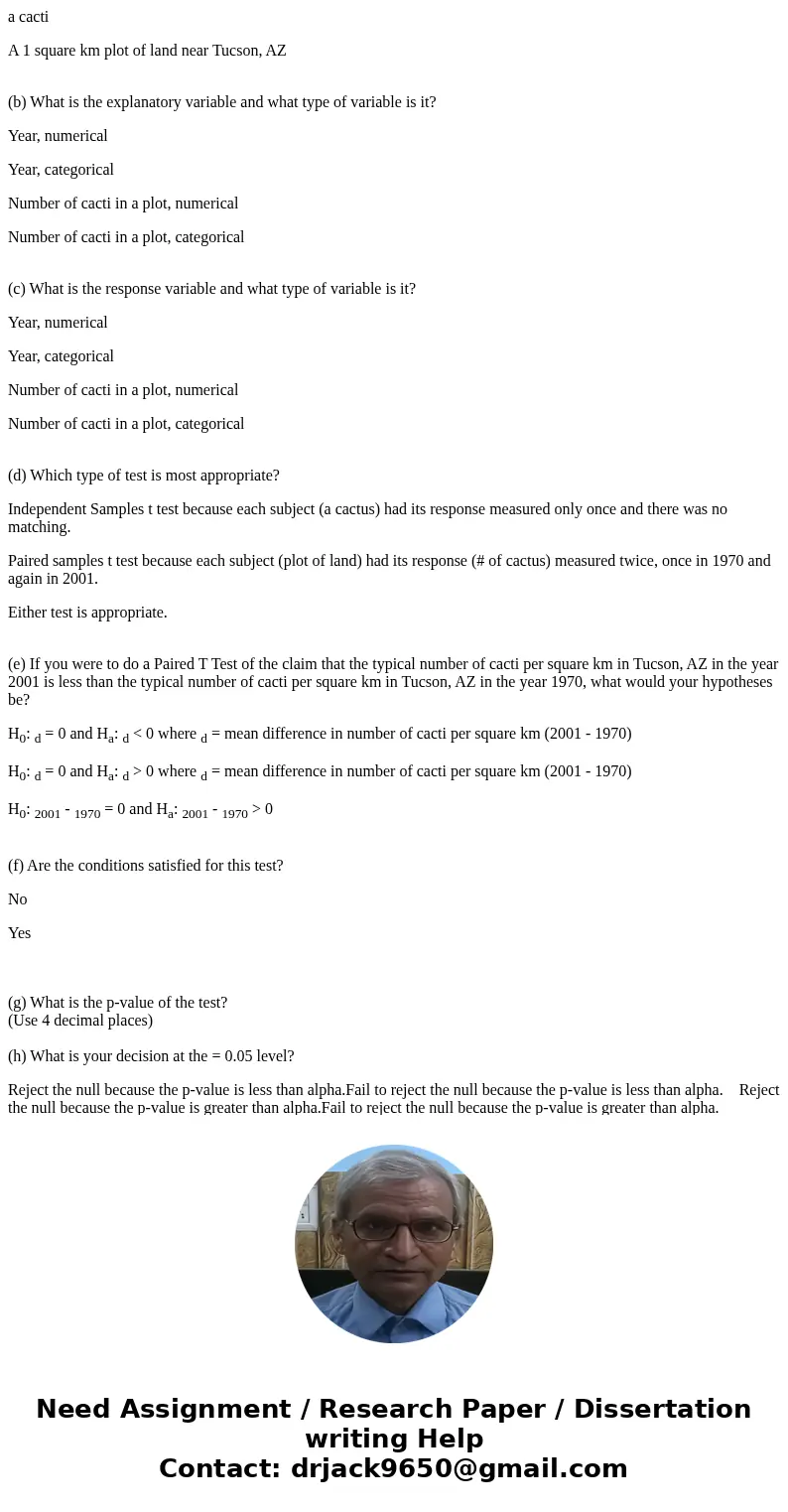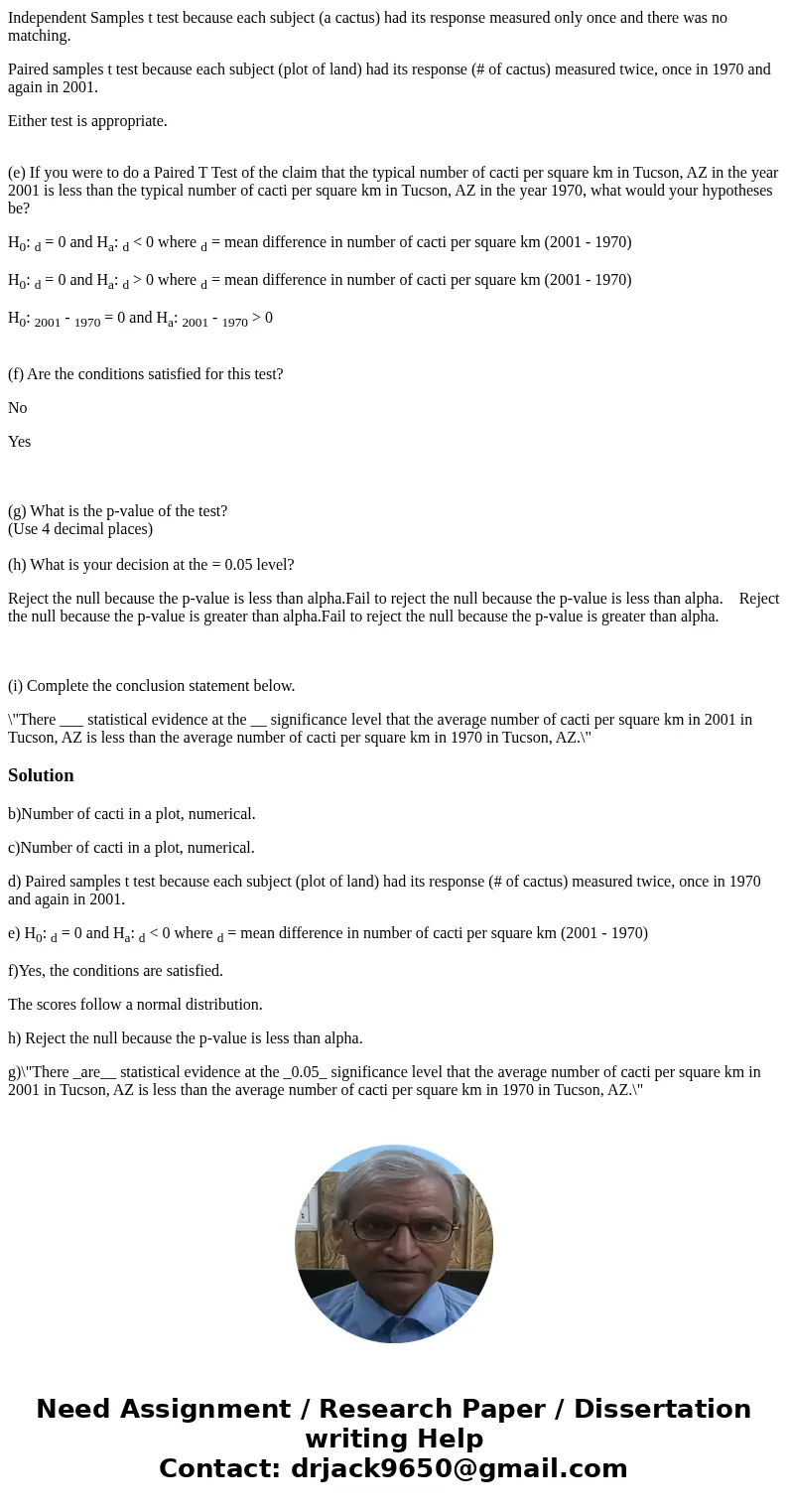a cacti A 1 square km plot of land near Tucson AZ b What is
a cacti
A 1 square km plot of land near Tucson, AZ
(b) What is the explanatory variable and what type of variable is it?
Year, numerical
Year, categorical
Number of cacti in a plot, numerical
Number of cacti in a plot, categorical
(c) What is the response variable and what type of variable is it?
Year, numerical
Year, categorical
Number of cacti in a plot, numerical
Number of cacti in a plot, categorical
(d) Which type of test is most appropriate?
Independent Samples t test because each subject (a cactus) had its response measured only once and there was no matching.
Paired samples t test because each subject (plot of land) had its response (# of cactus) measured twice, once in 1970 and again in 2001.
Either test is appropriate.
(e) If you were to do a Paired T Test of the claim that the typical number of cacti per square km in Tucson, AZ in the year 2001 is less than the typical number of cacti per square km in Tucson, AZ in the year 1970, what would your hypotheses be?
H0: d = 0 and Ha: d < 0 where d = mean difference in number of cacti per square km (2001 - 1970)
H0: d = 0 and Ha: d > 0 where d = mean difference in number of cacti per square km (2001 - 1970)
H0: 2001 - 1970 = 0 and Ha: 2001 - 1970 > 0
(f) Are the conditions satisfied for this test?
No
Yes
(g) What is the p-value of the test?
(Use 4 decimal places)
(h) What is your decision at the = 0.05 level?
Reject the null because the p-value is less than alpha.Fail to reject the null because the p-value is less than alpha. Reject the null because the p-value is greater than alpha.Fail to reject the null because the p-value is greater than alpha.
(i) Complete the conclusion statement below.
\"There ___ statistical evidence at the __ significance level that the average number of cacti per square km in 2001 in Tucson, AZ is less than the average number of cacti per square km in 1970 in Tucson, AZ.\"
Solution
b)Number of cacti in a plot, numerical.
c)Number of cacti in a plot, numerical.
d) Paired samples t test because each subject (plot of land) had its response (# of cactus) measured twice, once in 1970 and again in 2001.
e) H0: d = 0 and Ha: d < 0 where d = mean difference in number of cacti per square km (2001 - 1970)
f)Yes, the conditions are satisfied.
The scores follow a normal distribution.
h) Reject the null because the p-value is less than alpha.
g)\"There _are__ statistical evidence at the _0.05_ significance level that the average number of cacti per square km in 2001 in Tucson, AZ is less than the average number of cacti per square km in 1970 in Tucson, AZ.\"


 Homework Sourse
Homework Sourse